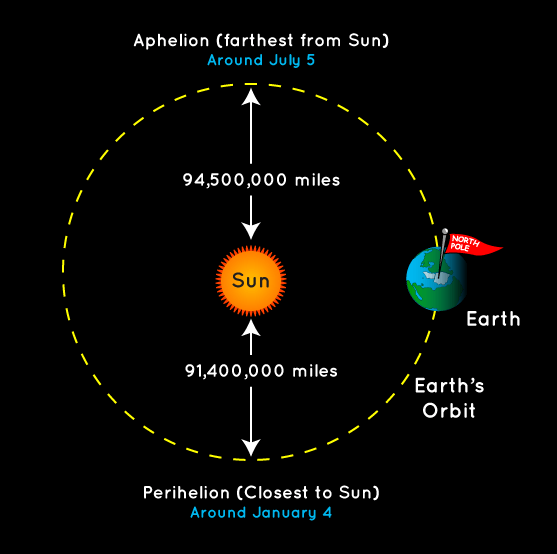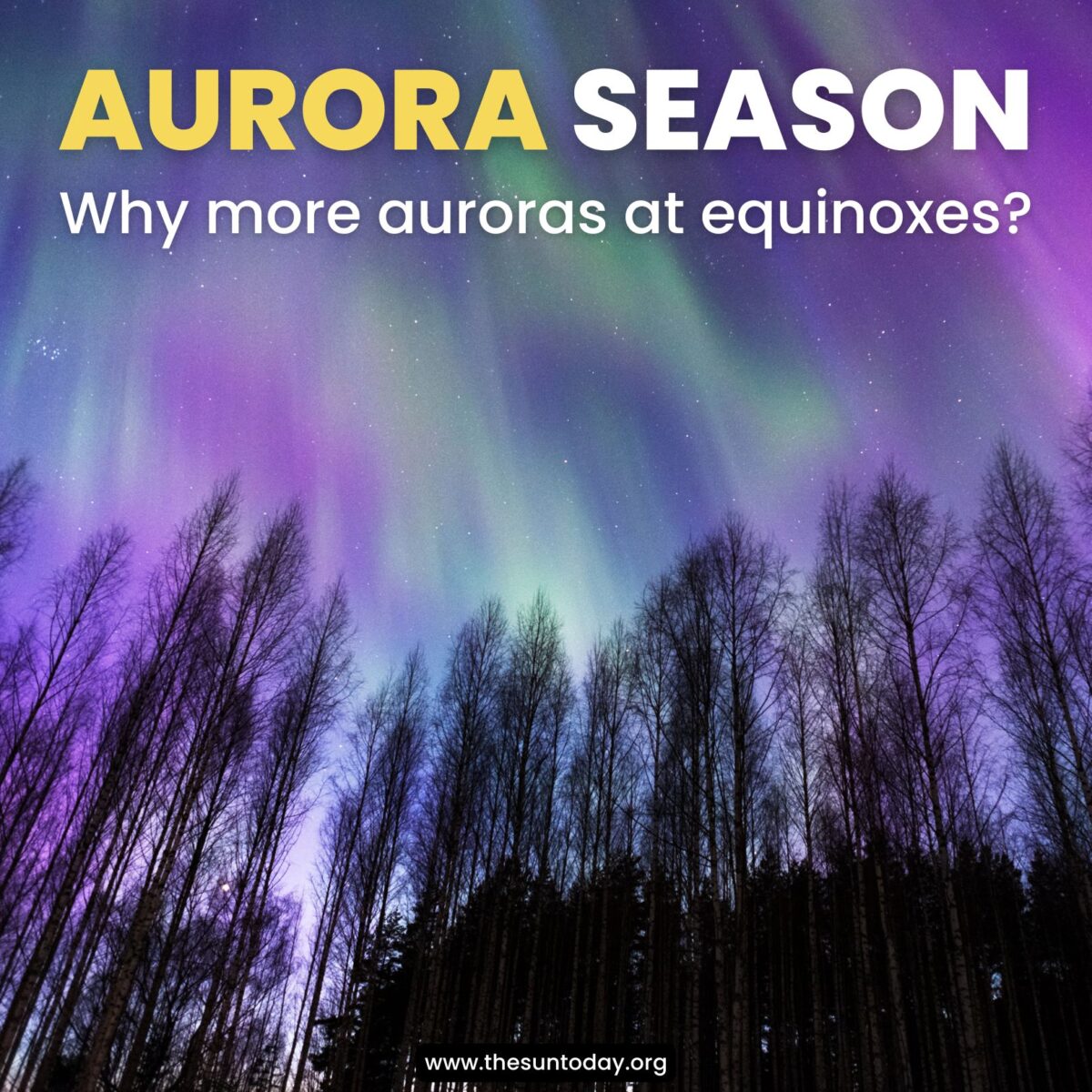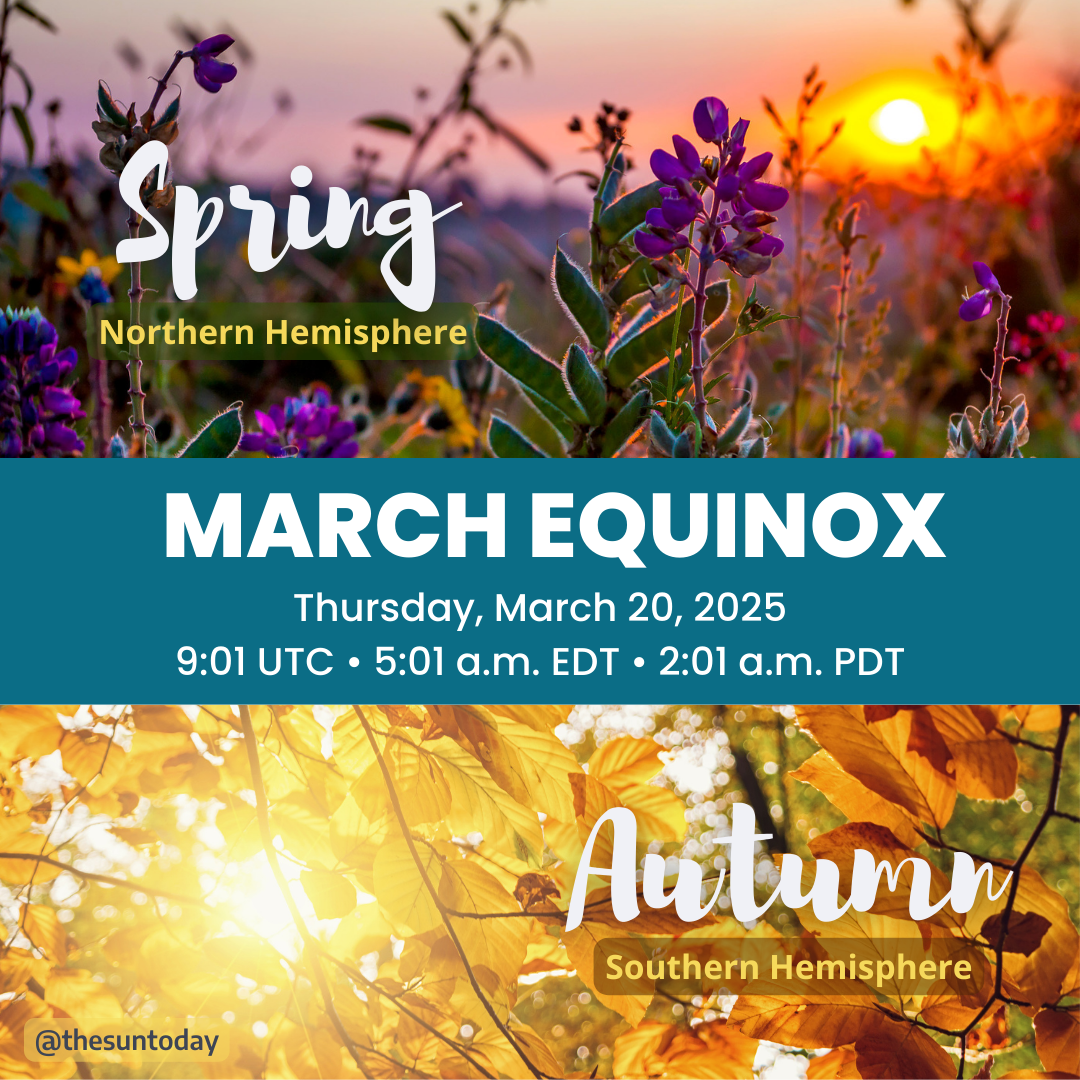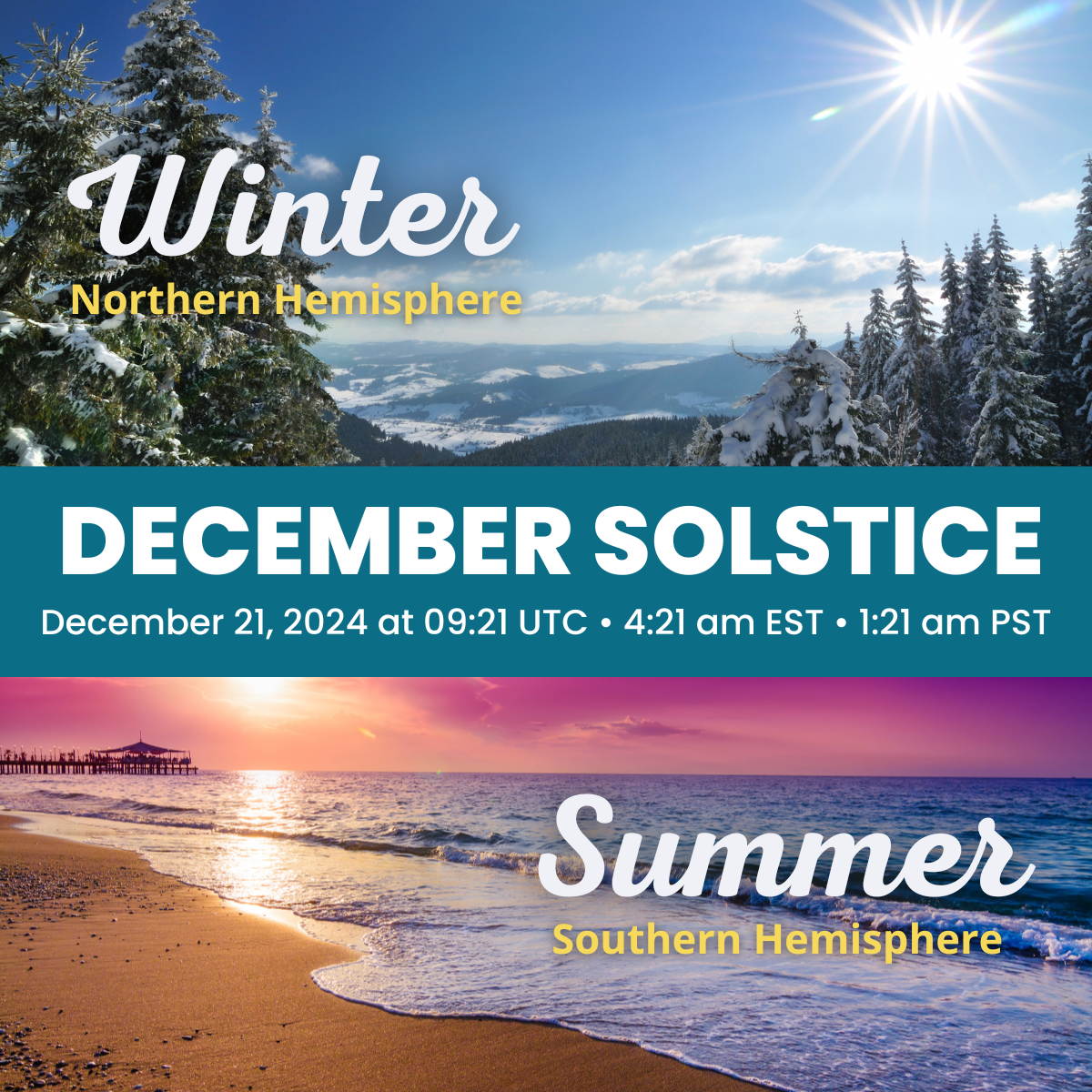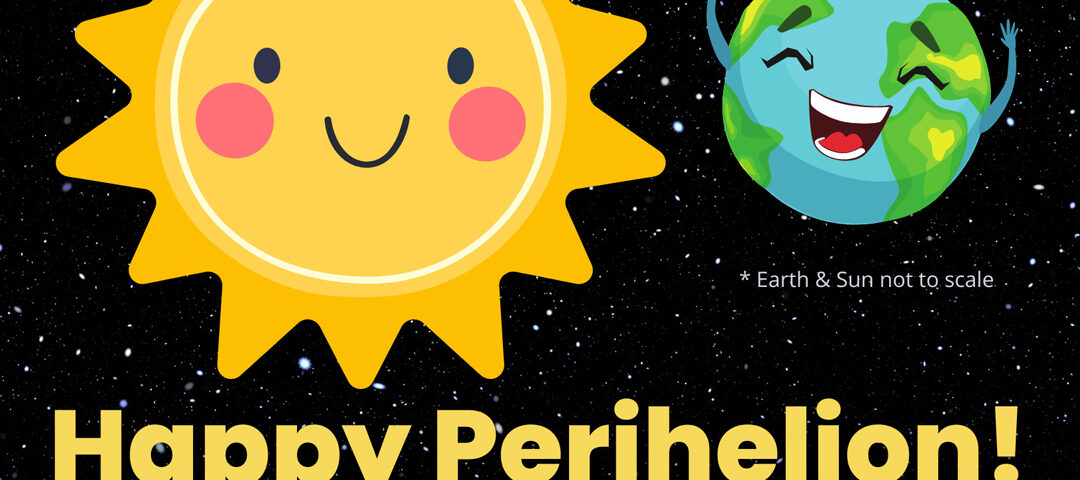
Parker Solar Probe made its closest swing by the Sun on December 24, 2024.
Next up for a close approach is Earth!
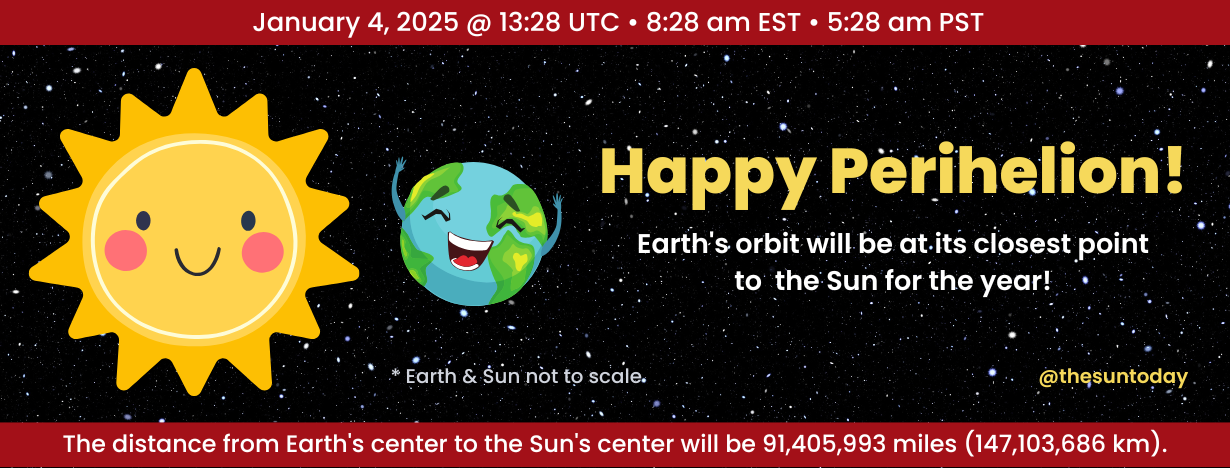
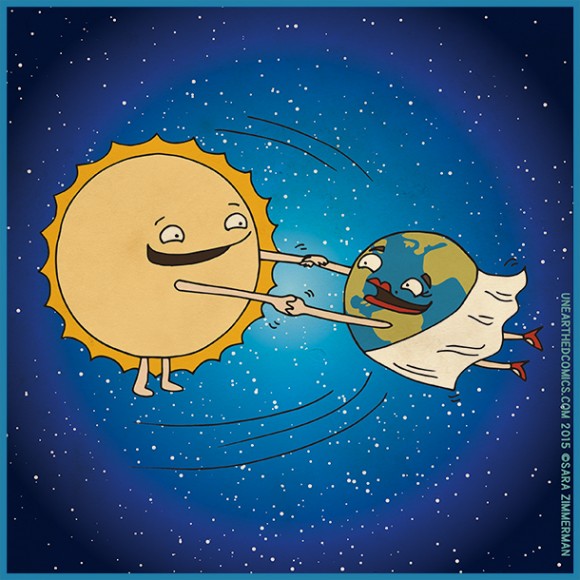
A cartoon of the Sun swinging Earth. Earth orbiting around the Sun. credit: Cartoon via Sara Zimmerman at UnEarthed Comics. (shared by Earthsky.org)
On January 4, 2025, at 13:28 UTC (8:28 a.m. EST or 5:28 a.m. PST), Earth’s orbit will be at our closest point to the Sun for the year (91,405,993 mi or 147,103,686 km).
This point of closest approach to the Sun is called perihelion. The point when Earth is farthest from the Sun is called aphelion.
- The terms perihelion and aphelion originate from ancient Greek: peri means “close,” apo means “far,” and helios means “Sun.”
- In astronomy, they describe the closest and farthest points in an object’s orbit around the Sun, collectively known as apsides.
- The Moon’s path around the Earth is also elliptical. The point in the Moon’s orbit that is closest to the Earth is called the perigee and the point farthest from the Earth is known as the apogee
- The generic terms for the farthest and closest approaches of a body in an elliptic orbit about a larger body are apoapsis and periapsis, respectively.
The diagram below shows the times and positions of the Earth during the solstices, equinoxes, perihelion, and aphelion as it orbits the sun over a year.
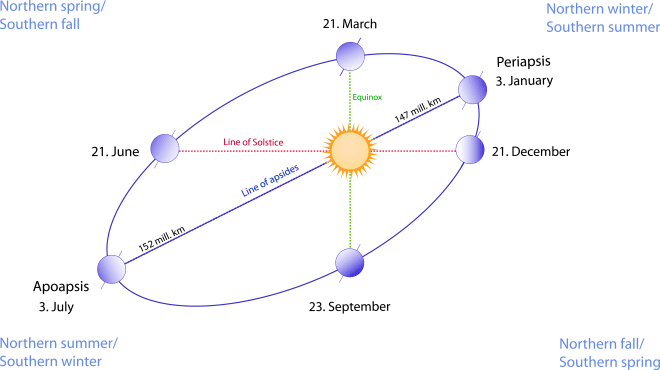
Credit: http://bit.ly/1pQn7wy
This diagram shows the relation between the line of solstice and the line of apsides of Earth’s elliptical orbit. The orbital ellipse (with eccentricity exaggerated for effect) goes through each of the six Earth images, which are sequentially the points of:
- Perihelion (periapsis—nearest point to the sun) on anywhere from 2 January to 5 January
- March Equinox on 20 or 21 March
- June Solstice on 20 or 21 June
- Aphelion (apoapsis—the farthest point from the sun) on anywhere from 4 July to 7 July
- September Equinox on 22 or 23 September,
- December Solstice on 21 or 22 December.
- Learn more about solstices and equinoxes…
A common misconception is that seasons are caused by our distance from the Sun. The Earth’s tilt is what causes the seasons.
However, the times of greatest solar radiation on a hemisphere happen not because of the distance between the Earth and sun but the tilt of Earth’s rotation axis. These times are during the December and June solstices.
The solstices happen because of the tilt of Earth’s axis of rotation with respect to its orbital path around the Sun. The axis of rotation is an imaginary line drawn straight through Earth connecting the North Pole to the South Pole. This line is tilted 23.5° from Earth’s orbital path around the Sun. This means that the Sun’s light does not hit the Earth evenly at a particular latitude above and below the equator. This tilt is the cause of Earth’s seasons.
- At perihelion Earth is 0.9833 Astronomical Units (AUs) or 91,405,993 mi (147,103,686 km) from the sun
- At aphelion, it is 1.0167 AU or 94,502,939 mi (152,087,738 km) from the sun.
During perihelion the Sun may appear about 3% larger in the sky, though this is not noticeable without precise instruments.
While the 2025 perihelion is a routine astronomical event, it underscores the relationship between Earth’s orbit, axial tilt, and seasonal differences between the hemispheres.
Differences Between the Northern and Southern Hemispheres
Earth’s seasons are not determined by its distance from the Sun but by its axial tilt. This is why, during perihelion—when Earth is closest to the Sun—the Northern Hemisphere experiences winter, while the Southern Hemisphere is in summer. Conversely, during aphelion—when Earth is farthest from the Sun—the Northern Hemisphere is in summer, and the Southern Hemisphere experiences winter.
Seasonal Timing
Northern Hemisphere Summer: From the June solstice to the September equinox.
Southern Hemisphere Summer: From the December solstice to the March equinox.
Orbital Impact on Seasonal Length
During Northern Hemisphere summer, Earth is at aphelion and moves more slowly in its orbit. This results in a longer summer and shorter winter.
During Southern Hemisphere summer, Earth is at perihelion and moves more quickly in its orbit, leading to a shorter summer and longer winter.
Due to these orbital dynamics, the Northern Hemisphere summer is approximately 4 days longer than the Southern Hemisphere summer.
Daylight and Latitude
Cities in the Northern Hemisphere receive more daylight over a year compared to the Southern Hemisphere. This difference arises from Earth’s tilt and orbital position. Around the Arctic and Antarctic Circles, the Sun’s path along the horizon causes noticeable variations in daylight patterns.
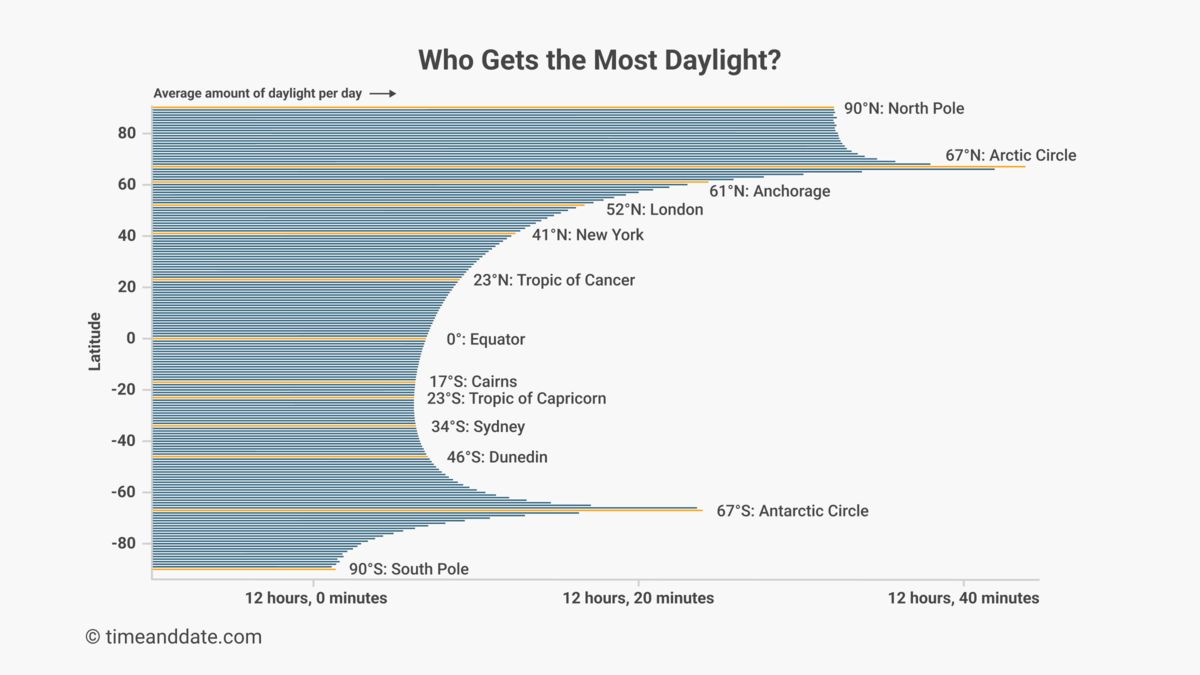
This bar chart shows the average amount of daylight per day, over the course of one year, for every line of latitude from the North Pole at 90° north, to the South Pole at 90° south. Consequences of aphelion: generally speaking, cities in the Northern Hemisphere get more daylight over the course of the year than cities in the Southern Hemisphere. The reason for the spikes around the Arctic and Antarctic Circles in the above chart is the way the Sun skims along the horizon in the polar regions. Image via timeanddate.com
Here are Earth’s perihelions and aphelions for 2024 through 2028.
| Year | Perihelion | Distance | Aphelion | Distance |
|---|---|---|---|---|
| 2025 | January 4, 2025 8:28 am | 91,405,993 mi | July 3, 2025 3:54 pm | 94,502,939 mi |
| 2026 | January 3, 2026 12:15 pm | 91,403,637 mi | July 6, 2026 1:30 pm | 94,502,962 mi |
| 2027 | January 2, 2027 9:32 pm | 91,406,556 mi | July 5, 2027 1:05 am | 94,510,857 mi |
| 2028 | January 5, 2028 7:28 am | 91,404,129 mi | July 3, 2028 6:18 pm | 94,506,289 mi |
| * All aphelion/perihelion times are in local Eastern time (ET). | ||||
Spacecraft Also Have Perihelion & Aphelions
Upcoming closest approaches to the Sun of note are:
- The next perihelion for NASA’s Parker Solar Probe, #23, is March 22, 2025.
- The next perihelion for ESA’s Solar Orbiter is March 31, 2025.


